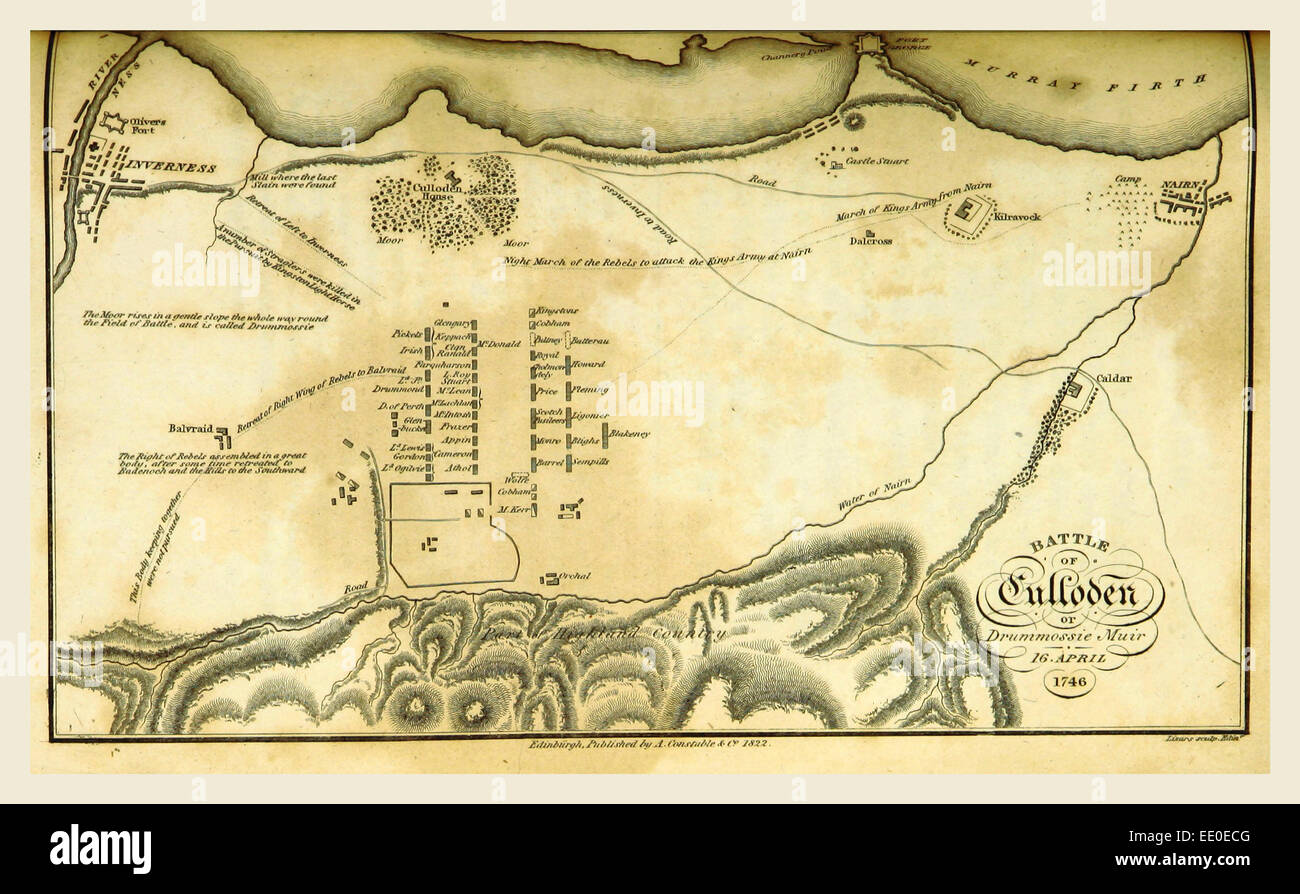
Bataille de culloden Banque de photographies et d’images à haute résolution Alamy
This is an interesting historic circular route that takes you through Culloden Wood just outside of Inverness, taking in Lord President's Seat, St Mary's Well, and Prisoners' Stone within the woodland. The Battle of Culloden was fought on 16 April 1746 on the Culloden Moors, where the Jacobite Army fought the British Army in Charles Edward Stuart's attempt to reclaim the throne. The.

Monument De Bataille Chez Culloden, 1745 Photo stock Image du monument, landmark 20400126
The Battle of Culloden. The course of British, European and world history was changed at Culloden on 16 April 1746. A ferocious war had come to Scotland, dividing families and setting clan against clan. It was here that the Jacobite army took their last stand to reclaim the thrones of Britain from the Hanoverians for a Stuart king.

Batalla de Culloden (17 de enero de 1746) Arre caballo!
A surviving boundary wall of Culloden Parks, a key location at the Battle of Culloden. New evidence has been uncovered about 1746's Battle of Culloden. The battle saw forces loyal to Bonnie Prince.

Scottish Trip 7 Champ de bataille de Culloden
The latter was supported by the British government, then led by the Whig party. On 16 April 1746, the two sides met at Culloden Battlefield. The Jacobites, made up of around 5,000 Highlanders together with English and French units, were led by James Stuart's son Charles Edward Stuart (known as the Young Pretender or Bonnie Prince Charlie).
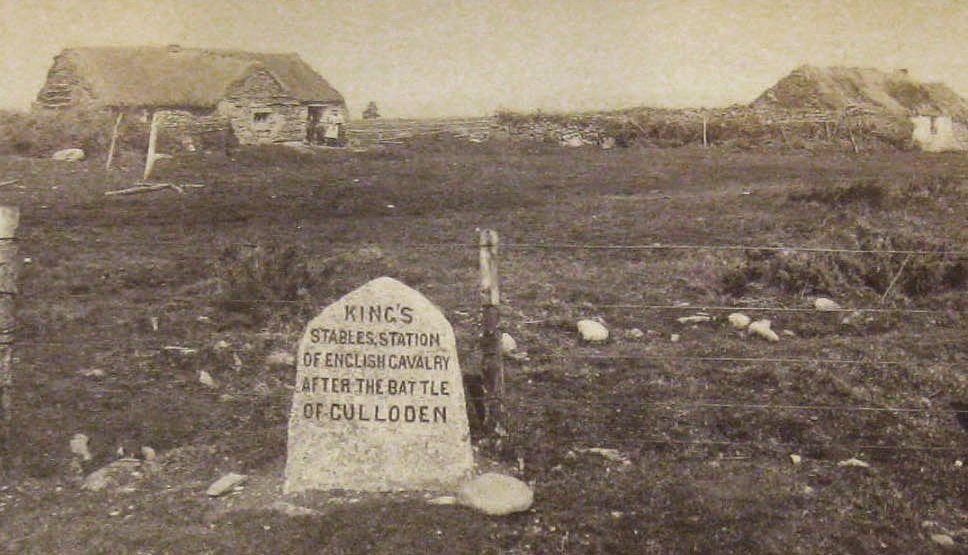
The Battle Of Culloden Facts How Much Average Cost Price
The Battle of Culloden (/ k ə ˈ l ɒ d ən /; Scottish Gaelic: Blàr Chùil Lodair) was the final confrontation of the Jacobite rising of 1745.On 16 April 1746, the Jacobite army of Charles Edward Stuart was decisively defeated by a British government force under Prince William Augustus, Duke of Cumberland, on Drummossie Moor near Inverness in the Scottish Highlands.

Battle of Culloden by Brian Palmer Scotland history, Scottish heritage, British history
Prince Charles Edward Stuart: Battle of Culloden 16th April 1746 in the Jacobite Rebellion. Date of the Battle of Culloden: 16th April 1746 (Old Style) (27th April 1746 New Style). The dates in this page are given in the Old Style. Place of the Battle of Culloden: South east of Inverness and a few miles south west of Nairn in Scotland.

My Heart Will Always Be In Scotland's Photos My Heart Will Always Be In Scotland Culloden
In Culloden Professor Pittock estimates that 3,000 men died on the battlefield, but no more than a third in action. The wounded were finished off where they lay. Atrocities continued for weeks as the British army sought to 'pacify' the highlands of Scotland. Professor Pittock added: "Seldom has the adage that history is written by the.
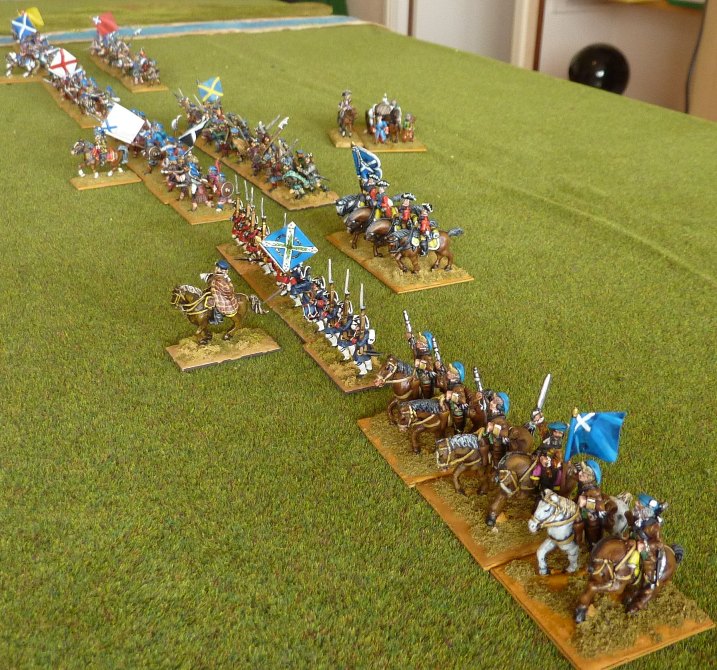
16 avril 1746, Bataille de Culloden (270ème anniversaire)
La bataille de Culloden eut lieu le 16 avril 1746 à Culloden ().Elle marque l'échec du quatrième des débarquements royalistes en Écosse, après ceux de 1692, 1708, et 1715, et la fin des espoirs de restauration de la lignée des Stuarts sur les trônes d'Écosse et d'Angleterre, avec la fuite du prince Charles Édouard Stuart réduit à implorer l'aide de la jeune Flora MacDonald.
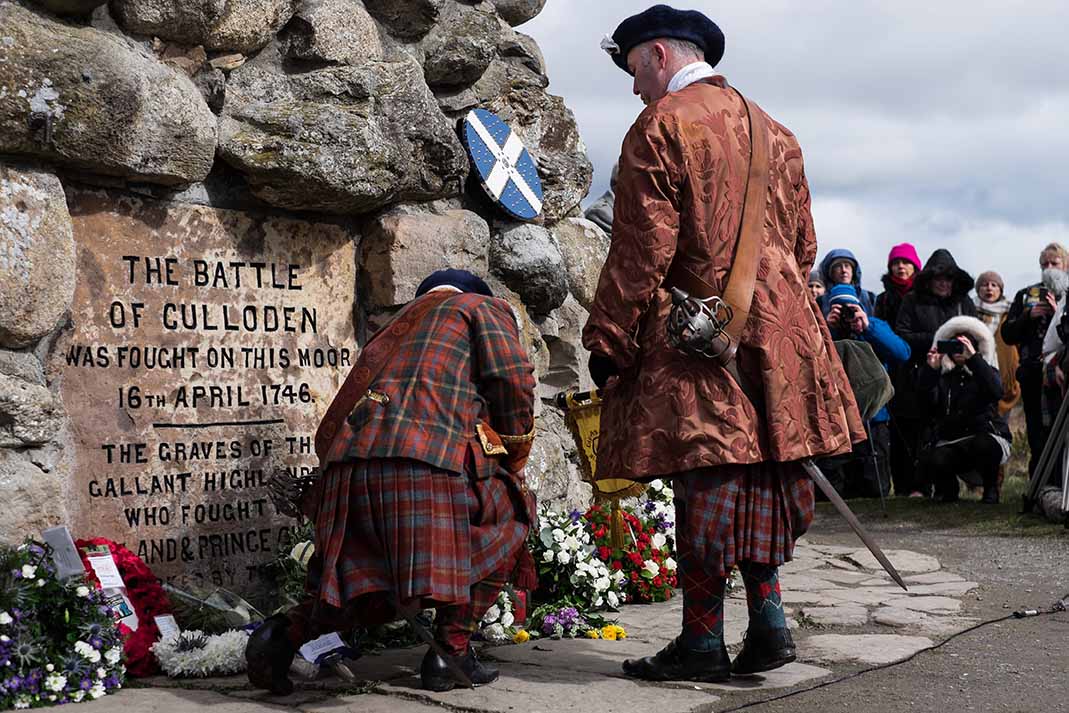
Culloden Battlefield and Visitor Centre Visit Inverness Loch Ness
Powerfully emotive and atmospheric battlefield where the 1745 Jacobite Rising came to a tragic end. Experience the powerful emotions of the Battle of Culloden in our visitor centre's 360-degree battle immersion theatre, which puts you right in the heart of the action. Discover the true story of the 1745 Rising, from both the Jacobite and.
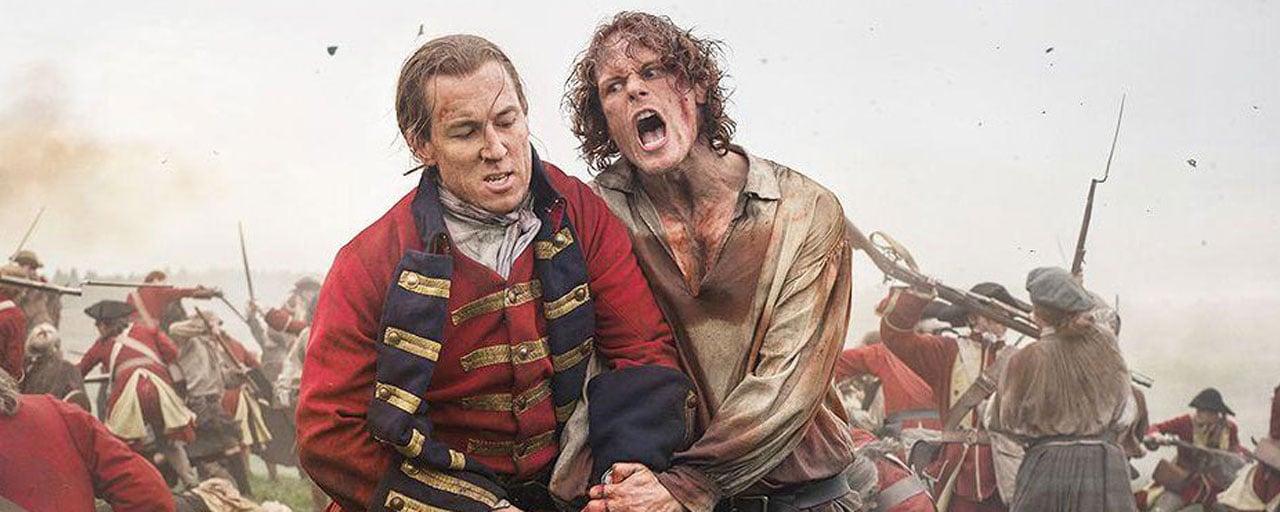
Outlander saison 3 Au coeur de la bataille de Culloden dans une nouvelle vidéo News Séries à
Battle of Culloden, (April 16, 1746), the last battle of the "Forty-five Rebellion," when the Jacobites, under Charles Edward, the Young Pretender ("Bonnie Prince Charlie"), were defeated by British forces under William Augustus, duke of Cumberland.Culloden is a tract of moorland in the county of Inverness, Scotland, forming a part of the northeast of Drummossie Moor and lying about 6.

Centre d'accueil des visiteurs du champ de bataille de Culloden Côte nord 500
Culloden was of course a civil war, as was the Anglo-Irish war of 1919-21 or the American War of Independence. But every national struggle divides its nation, and the Jacobite Rising of 1745-46.

Pierre tombale clan Fraser à Culloden Moor près d'Inverness, Highlands écossais, site de la
Je veux bien sûr vous parler de la triste bataille de Culloden. Elle opposa le 16 avril 1746 l'armée Britannique du roi protestant George II de Hanovre à l'armée jacobite. Ces écossais rassemblés sous la bannière du roi catholique Charles Stuart. Deux rois, deux armées mais une seule couronne pour un seul trône.
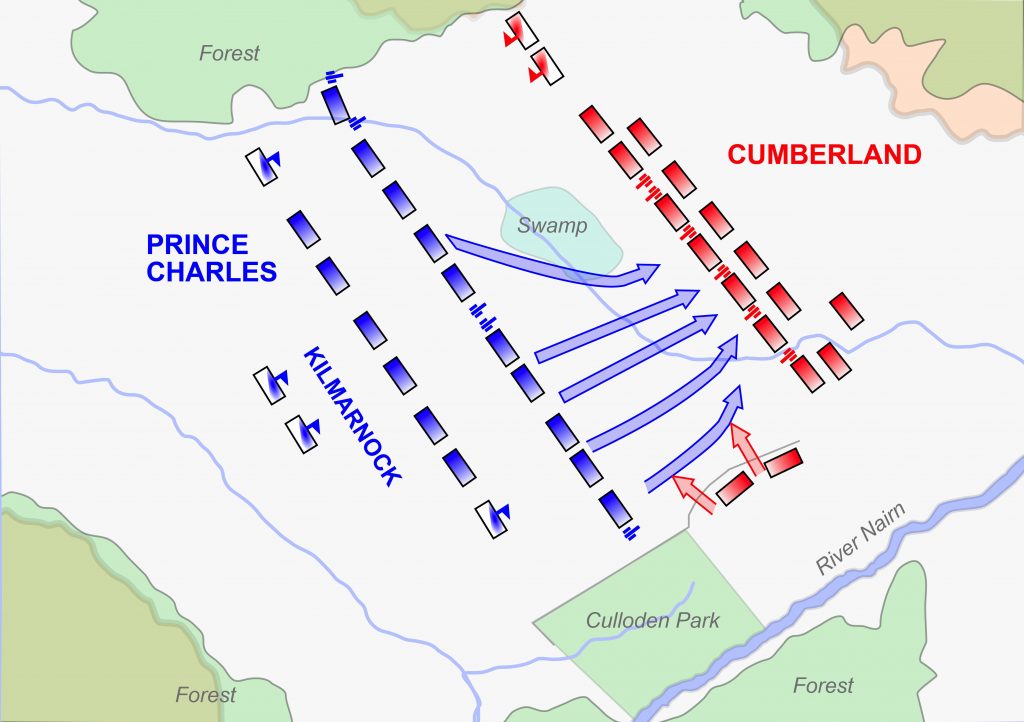
16 avril 1746 la bataille de Culloden
In barely 30 minutes, about 1,600 soldiers lay dead on this remote, boggy site, close to Inverness. Yet 275 years this month since the last pitched battle on British soil, the echoes of the Jacobite defeat at Culloden are still audible in British and European politics, while the romantic legend of Bonnie Prince Charlie, the head of the Jacobite.

La bataille de Culloden YouTube
The battle of Culloden: a brief guide. Where: Northern Scotland. When: 16 April 1746. Combatants: British Government vs Jacobites. Outcome: Decisive victory for the British Army. Culloden was the last battle fought on British soil. Prince Charles Edward, grandson of the deposed Roman Catholic Stuart king, James II and VII, raised the standard.
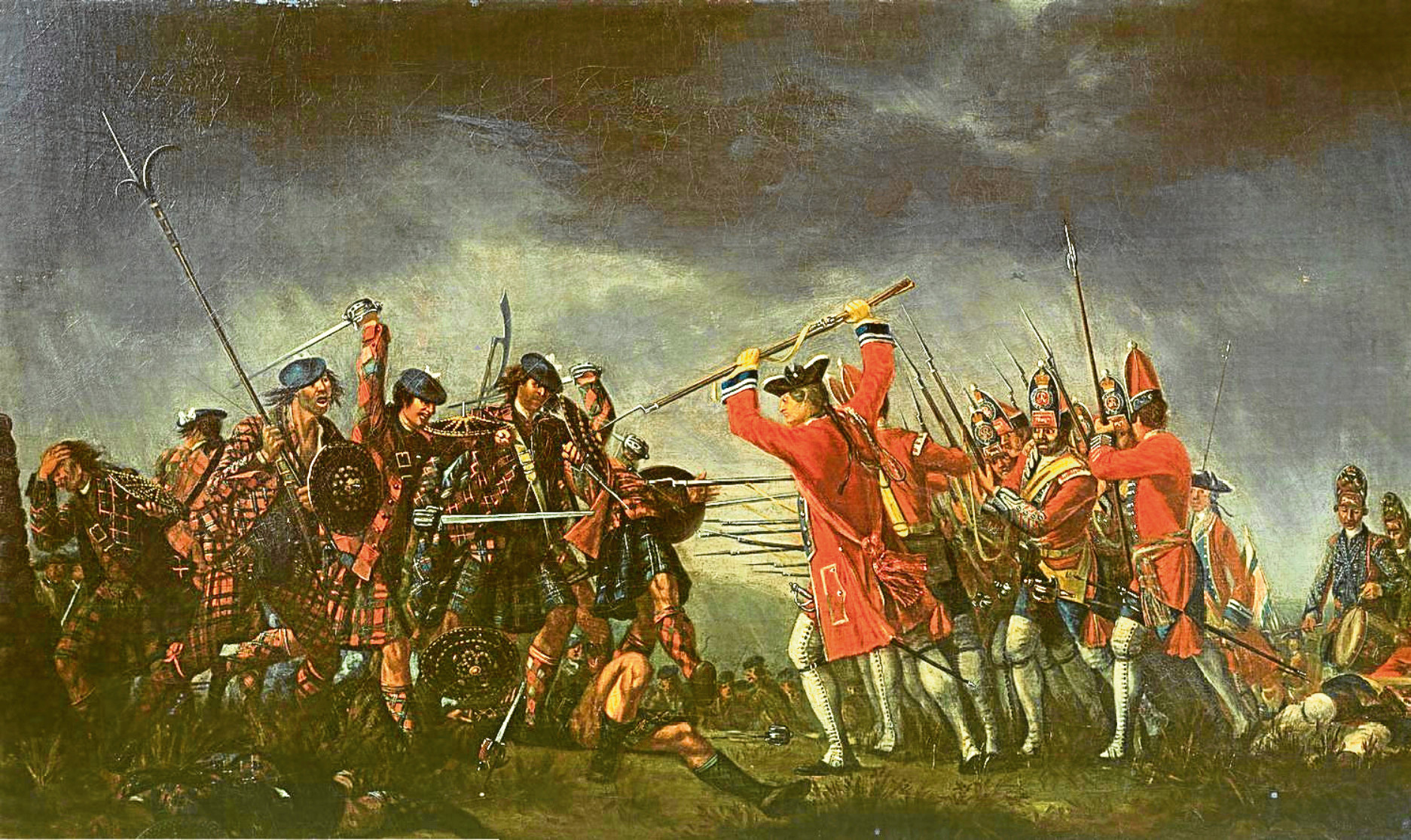
The story behind Culloden the battle that was to change history The Sunday Post
The last battle to be fought on British soil would be a bloody affair, with men from all over Europe clashing on a cold and dreary day April 1746. Culloden i.

Pin on Elizabethian
Fought near Inverness in Scotland on 16 April 1746, the Battle of Culloden was the climax of the Jacobite Rising (1745-46). The forces of Prince Charles Edward Stuart, attempting to reclaim the throne for his family, met a British army led by the Duke of Cumberland, son of the Hanoverian King George II. The battle finally settled a contest for.